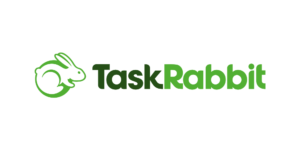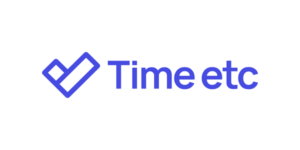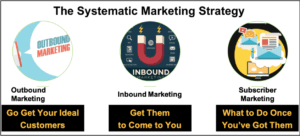
As a blogger, you know that there are never enough hours in the day to get everything done.
Between writing blog posts, promoting your content, and engaging with your audience, it can be tough to find time to do everything on your own.
That’s where a virtual assistant for bloggers (also known as a blogging VA or VA for bloggers) can come in handy.
My name is Connor Gillivan. I’m an entrepreneur and blogger. I’ve been running blogs for my companies for the past 10 years and there’s always too much to do.
I’ve tapped into the power of blogging VAs and it’s allowed me to focus my time on the most important aspects of growth.
It’s saved me time, given me more focus, and allowed me to make more money with my blogging.
In this article, we’ll explore 15 tasks that a virtual assistant for bloggers can do to help you grow your blog and free up your time.
- Editing and proofreading blog posts
- Scheduling social media posts
- Responding to comments on your blog and social media channels
- Managing your email inbox
- Researching and creating content ideas
- Formatting blog posts and creating graphics
- Managing your editorial calendar
- Conducting keyword research for SEO
- Outreach for guest posting or collaborations
- Creating and sending newsletters
- Recording and editing podcasts
- Managing your website’s maintenance and updates
- Creating and managing your affiliate program
- Transcribing video or audio content
- Managing your blog’s monetization strategy
Let’s dive in.
How a Virtual Assistant Can Be Super Helpful for Bloggers
To really understand the value of a virtual assistant for bloggers, let’s take a look at a case study.
Meet Lisa, a digital marketing consultant who runs her own blog on the side.
Lisa had been struggling to keep up with the demands of her growing blog.
She found herself spending more and more time on administrative tasks like scheduling social media posts and responding to emails.
Lisa knew that something had to change if she wanted to keep growing her blog while also running her consulting business.
That’s when she decided to hire a virtual assistant for her blog.
Lisa’s blogging VA was able to take over many of the administrative tasks that were taking up so much of her time.
This allowed Lisa to focus on creating high-quality content and promoting her blog.
Her VA helped with everything from scheduling social media posts to editing blog posts to managing her email inbox.
With the help of her VA, Lisa was able to grow her blog and her consulting business without feeling overwhelmed by all the work.
You can do this too.
Let’s now look at 15 tasks that a Blogging VA can help you with.
15 Tasks a Virtual Assistant for Bloggers Can Do

So, what exactly can a virtual assistant for bloggers do? Here are 15 tasks that a blogging VA can handle:
1. Editing and proofreading blog posts
A virtual assistant can ensure that your blog posts are free of errors and read smoothly by editing and proofreading them. They can also suggest changes to improve your writing style or make sure your posts meet your branding and messaging requirements.
2. Scheduling social media posts
A virtual assistant can schedule your social media posts in advance, ensuring that your social media presence remains consistent even when you’re busy with other tasks.
3. Responding to comments on your blog and social media channels
A virtual assistant can monitor your blog and social media channels for comments and respond to them on your behalf. This ensures that your audience feels heard and valued while freeing up your time to focus on other tasks.
4. Managing your email inbox
A virtual assistant can manage your email inbox by responding to emails, categorizing them, and even filtering out spam. This helps keep your inbox organized and prevents you from getting overwhelmed with messages.
5. Researching and creating content ideas
A virtual assistant can research and suggest ideas for your blog content, ensuring that your content is always fresh and relevant to your target audience.
6. Formatting blog posts and creating graphics
A virtual assistant can format your blog posts, ensuring that they look professional and are easy to read. They can also create graphics or visual aids to accompany your blog posts.
7. Managing your editorial calendar
A virtual assistant can manage your editorial calendar, ensuring that your blog posts are published on schedule and that there is a steady flow of content.
8. Conducting keyword research for SEO
A virtual assistant can conduct keyword research to help you optimize your blog posts for search engines, ensuring that your blog ranks higher in search results and attracts more traffic.
9. Outreach for guest posting or collaborations
A virtual assistant can reach out to other bloggers or brands for guest posting or collaborations, helping you build relationships with other bloggers or businesses in your niche.
10. Creating and sending newsletters
A virtual assistant can create and send newsletters to your subscribers, providing them with valuable content and keeping them engaged with your brand.
11. Recording and editing podcasts
A virtual assistant can record and edit your podcasts, ensuring that they are of high quality and sound professional.
12. Managing your website’s maintenance and updates
A virtual assistant can manage your website’s maintenance and updates, ensuring that it runs smoothly and is always up to date.
13. Creating and managing your affiliate program
A virtual assistant can create and manage your affiliate program, ensuring that your affiliates have the resources they need to promote your brand and earn commissions.
14. Transcribing video or audio content
A virtual assistant can transcribe your video or audio content, making it easier to repurpose or share in other formats.
15. Managing your blog’s monetization strategy
A virtual assistant can manage your blog’s monetization strategy, helping you generate revenue through ads, affiliate marketing, or other channels.
Tips for Hiring a Blogging VA
Now that you know what a virtual assistant for bloggers can do, how do you go about hiring one?
Here are a few tips:
- Start by defining the tasks that you need help with. This will make it easier to find a VA who has the right skills and experience.
- Look for VAs who specialize in blogging or have experience working with bloggers.
- Conduct interviews and ask for references to ensure that the VA you hire is a good fit for your business.
- Set clear expectations and communicate regularly with your VA to ensure that they are meeting your needs.
- Consider working with a reputable outsourcing agency like Outsource School to make the hiring process easier and more efficient.
Overall, take the time to plan for hiring a Blogging VA before you jump in.
The more time you invest in getting properly prepared, the more successful the hire and relationship will be.
Where Can You Hire A VA For Your Blog?

There are a variety of options available for hiring a virtual assistant for your blog.
One popular option is to use a freelancing platform such as Upwork, Freelancer, Fiverr, or Workello, which allow you to post job listings and connect with potential candidates.
You can also search for virtual assistant services that specialize in providing VAs for bloggers or small businesses, such as Virtual Staff Finder, Zirtual, or Virtual Assistant Assistant.
When hiring a virtual assistant, it’s important to do your due diligence by:
- conducting interviews
- check references
- providing clear instructions
- setting expectations for your VA
You should also be prepared to invest time and resources into training your VA and providing ongoing support to ensure that they can help you achieve your business goals.
You can also learn more from Chris Ducker in this video:
What is Outsource School?

Outsource School is an online platform and community that helps entrepreneurs and small business owners scale their businesses by outsourcing tasks to virtual assistants.
The platform was founded by Nathan Hirsch and Connor Gillivan, who have over a decade of experience in managing remote teams and outsourcing tasks.
Outsource School offers a range of resources, including courses, coaching, and on-demand assistance, to help business owners learn how to delegate tasks effectively, manage their teams, and scale their businesses.
Their courses cover topics such as hiring and onboarding virtual assistants, delegating tasks, managing your team, and optimizing your business processes.
Overall, Outsource School is a valuable resource for entrepreneurs and small business owners who want to grow their businesses by outsourcing tasks and building a remote team.
Get immediate access to Outsource School today and start scaling your blog with the help of virtual assistants.
Conclusion
In conclusion, hiring a virtual assistant for your blog can be a game-changer for your business.
By delegating tasks and freeing up your time, you can focus on creating high-quality content and growing your audience, while your VA takes care of the day-to-day tasks that can consume so much of your time.
From editing and proofreading blog posts to managing your website’s maintenance and updates, there are many tasks that a virtual assistant can handle for your blog.
Additionally, virtual assistants can help with social media management, email inbox management, content creation, podcast editing, outreach, and more.
By working with a virtual assistant, you can streamline your workflow, reduce your workload, and grow your business faster.
If you’re interested in hiring a virtual assistant for your blog, reach out to us at Outsource School and we can explain how we can help.
Similarly, set up a call with us and we’ll answer any questions you have as you dive into hiring a virtual assistant for your blog.



























 Charles Camisasca helps aspiring entrepreneurs and small business owners to start and grow their e-commerce stores. He is passionate that anyone with a wifi connection and a willingness to work hard can start a successful online business. He’s the founder of The E-Commerce Boardroom and the creator of the
Charles Camisasca helps aspiring entrepreneurs and small business owners to start and grow their e-commerce stores. He is passionate that anyone with a wifi connection and a willingness to work hard can start a successful online business. He’s the founder of The E-Commerce Boardroom and the creator of the 


